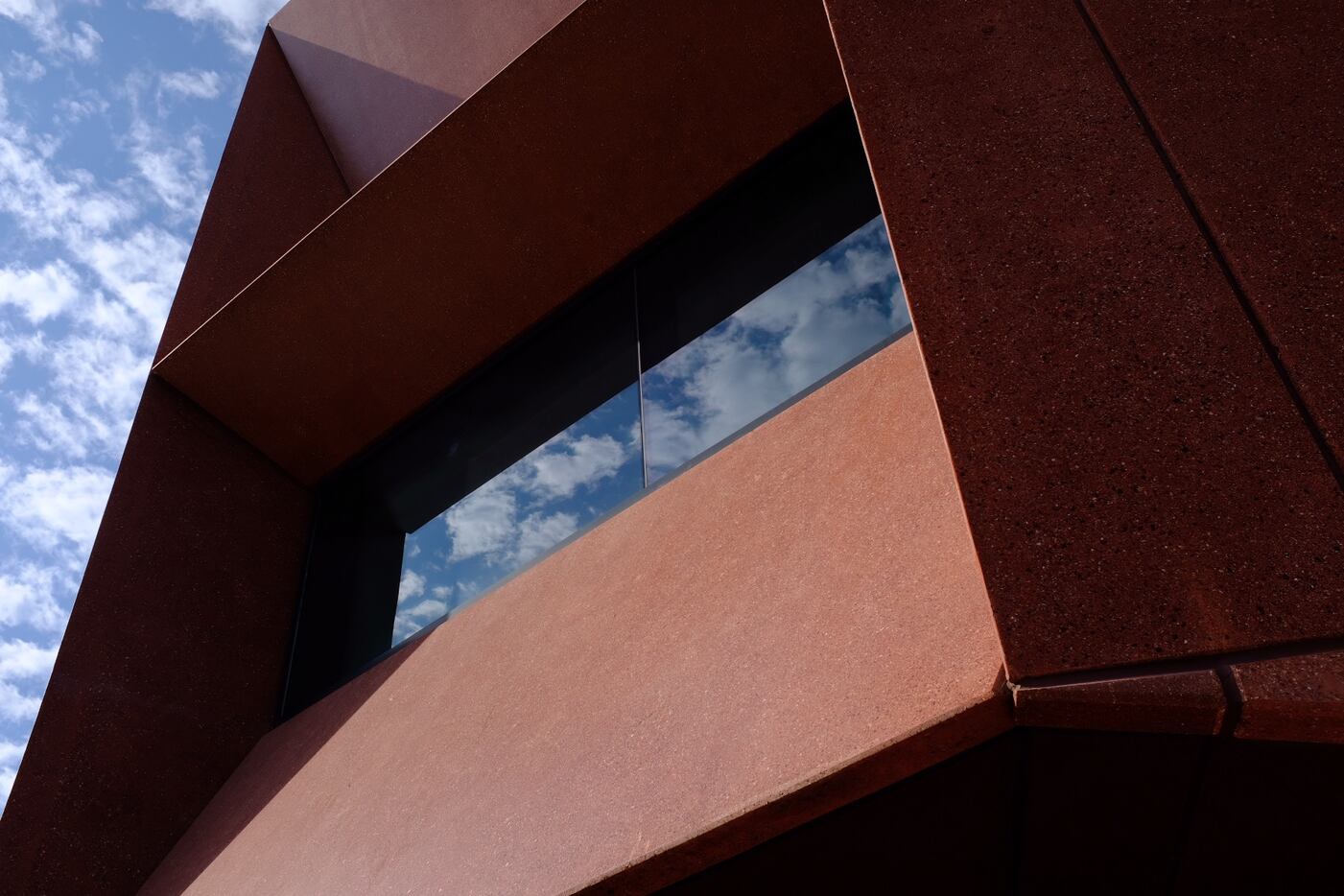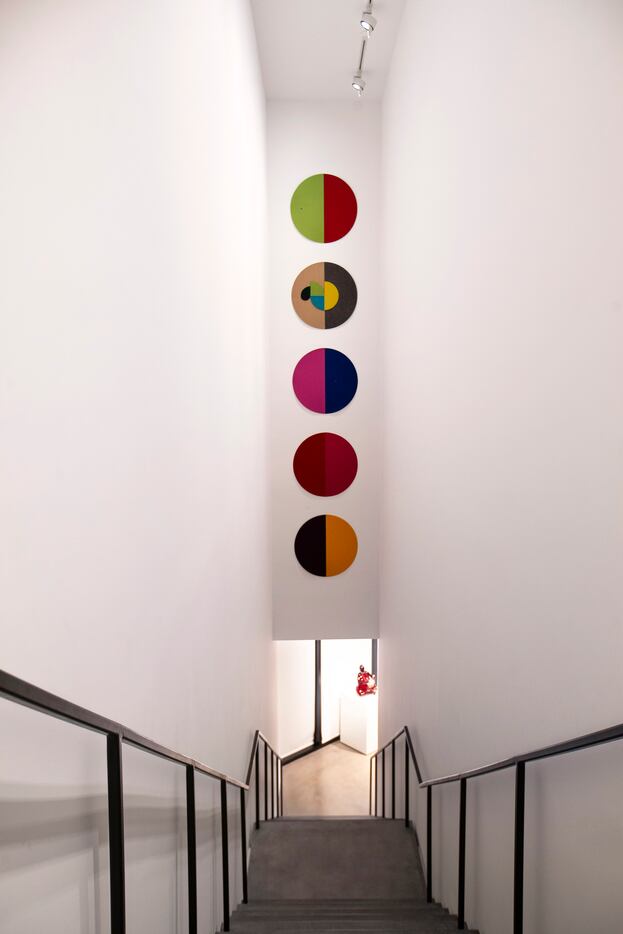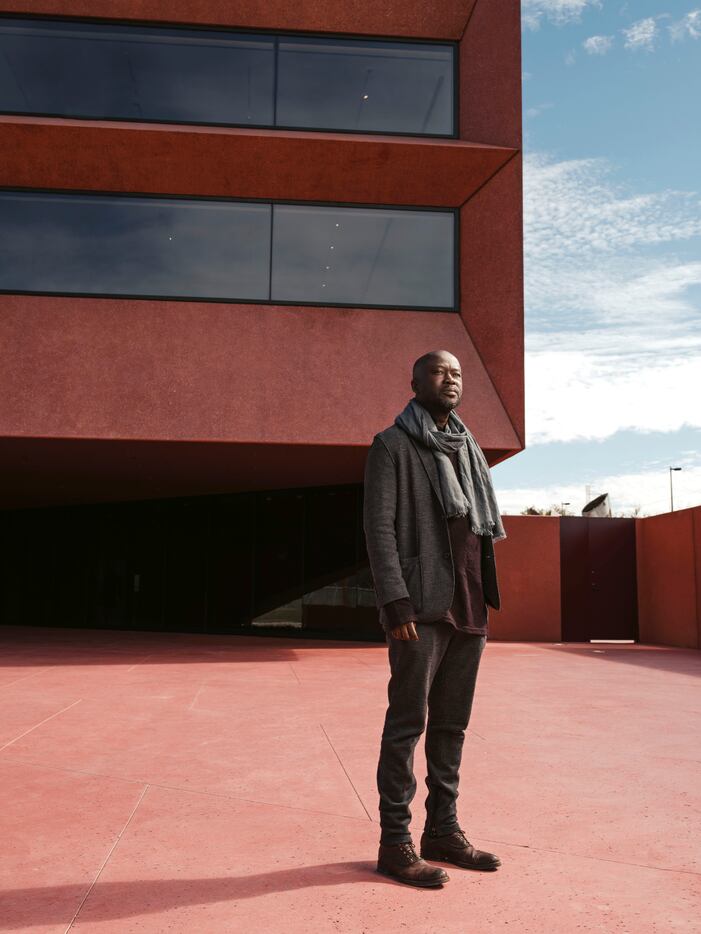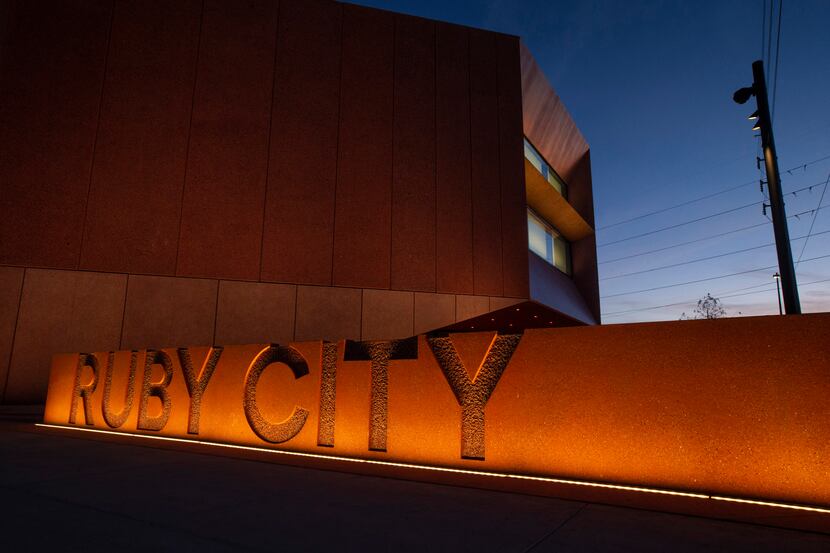Superficially it is an unlikely kinship, one being a blocky modern citadel and the other an imitation Venetian palazzo, but you will have to excuse me for suggesting San Antonio’s new Ruby City art center and Boston’s century-old Isabella Stewart Gardner Museum share some essential DNA, distant relatives in a family of quirky arts institutions.
Granted, they don’t share a visual language, although they are both domestic in scale — domestic in a relative sense, anyway, given their wealth. What binds them is the visionary philanthropists that created them: idiosyncratic women of means who cultivated artists and believed that accessibility to the visual arts was essential to the development of their traditionally conservative cities.
Among Gardner’s many eccentricities was a decree that the installation of her galleries remain exactly as she left them in perpetuity, an order that has been upheld. (The empty frames of pictures boosted in a notorious 1990 heist remain on display.)
Linda Pace, the Texas-born heiress who was the founder and guiding spirit of Ruby City, did not freeze her museum in amber, though she endowed it with its own endearing peculiarities, most notably that her own work be presented along with the leading contemporary artists she collected, among them Marina Abramovic, Teresita Fernández, Isa Genzken, Glenn Ligon, Maya Lin, Christian Marclay, Kiki Smith, Do Ho Suh, and Rachel Whiteread.
This is the kind of decision that makes critics snicker and wince — a philanthropist’s dubious attempt at narcissistic self-aggrandizement — and it probably doesn’t help that she attributes much of her interest in the arts to her dreams, in particular, one in which a magical multicolored snake bit her on the head, igniting her artistic imagination.
But, intellectual origins be damned, it turns out that Pace, who died of breast cancer in 2007 at the age of 62, was a credible artist, and it is her quirky vision that animates Ruby City. To that end, the first work one sees upon entry to the museum’s darkened lobby is Pace’s own spot-lit Red Project, a framed assemblage of dolls, toys, models, tchotchkes, and various other bric-a-brac in deep red (or “ruby”). It is a striking piece, rich in color and weirdness and allusion.
The museum itself was born of one of Pace’s “dream drawings,” a depiction of a walled city of dome-capped towers executed in red, orange and purple pencil, like something from the hand of a child.
It was this vision that the British architect David Adjaye transformed into the chiseled form that is Ruby City, the $16-million, 14,000-square-foot home for the Linda Pace Foundation. (He was selected after Pace’s death.)

While Adjaye’s public notoriety stems principally from the decorative golden filigree of the 2016 National Museum of African American History and Culture, in Washington, D.C., Ruby City demonstrates his gift for boldly manipulating architectural mass and volume.
It is a tough building, a faceted horizontal block of precast concrete panels that shift in hue from a light terra cotta to a deep red depending on the time of day and the angle of the sun. It never quite achieves a glowing “ruby,” though it gets fairly close to “salsa,” which is appropriate: Pace’s father was the founder of the eponymous food company known for its picante sauce. Her mother’s family owned San Antonio’s Pearl Brewery.
At ground level those cast-concrete panels, produced to order outside of Mexico City, have a smooth, polished surface; above, they have been left unfinished, giving the building’s otherwise flat planes a raw texture. That rugged quality is augmented by bits of glass and mica in the aggregate that sparkle in the sun.
Sitting on a workmanlike block south of downtown, it has the mysterious look of an ancient war machine, abandoned by the archaic people who built it. This is not entirely accidental: Adjaye claims one inspiration was San Antonio’s historic Spanish missions. Its solid form and largely blank walls make its scale difficult to judge with accuracy: If anything, it appears larger to the eye than it is in reality.
That reality becomes clear on the interior. The lobby, accessed from a courtyard, is small and dark, with an information desk of textured concrete and steel. Most of the action is upstairs. A long, slim stairwell leads up to the galleries proper, a series of four white boxes of varying dimensions lit from above by monitor skylights. From the last gallery, another stairway leads back down to the lobby, forming a kind of art loop. (There is an elevator, for those who prefer or need it.)
Back-of-house office space, including a beautiful conference room wrapped in warm wood — is tucked into the rear area on the first floor. Those spaces look out onto an enclosed sculpture garden commanded by a large Nancy Rubins mashup of mangled airplane parts which, in its chaos of jagged and jumbled forms, makes for an effective juxtaposition with Adjaye’s stolid structure.

If there is a bravura architectural moment, it is visible from the garden: tempting gravity, a floating vertical plane of red concrete guillotines down at an angle, blocking the harsh sun from the gallery interior. It might well be the heaviest shade in American architecture, and its design is a credit both to Adjaye and to his distinguished structural engineer, Guy Nordenson. His New York-based firm has been responsible for several recent works of structural invention in Texas, chief among them the 2018 Menil Drawing Institute, in Houston.
The Menil makes for another useful point of comparison; just as that institution has converted its Montrose environs into an open campus, so the Pace Foundation has colonized its own surroundings, if on a smaller scale. Ruby City is actually a bit of a misnomer; Ruby Street would be a more accurate description. In addition to Adjaye’s new building, the foundation maintains an additional gallery, parking lot, and a 1-acre pocket park dedicated to Pace’s son, who died of a drug overdose in 1997.
The area remains very much a work in progress. There’s an empty lot across Camp Street from Adjaye’s building and a U.S. Postal Service distribution center down the block. Electrical masts lord over the generous plaza that fronts Adjaye’s building. That plaza fronts what is currently a trash-strewn trench leading down to the neglected waterway that is the San Pedro Creek.
But that will soon change: The creek is in the midst of a $72 million transformation into a linear culture park; Ruby City will be one of the principal attractions along its meandering route.
In that, too, it is reminiscent of Isabella Stewart Gardner’s museum, which was set on the Fens, Boston’s marshy emerald necklace.
San Antonio’s answer is not quite so dainty, but it is a jewel nonetheless.

Details
150 Camp St., San Antonio, open Thursdays 10 a.m. to 8 p.m., Fridays through Sundays, 10 a.m. to 6 p.m., free admission, rubycity.org

